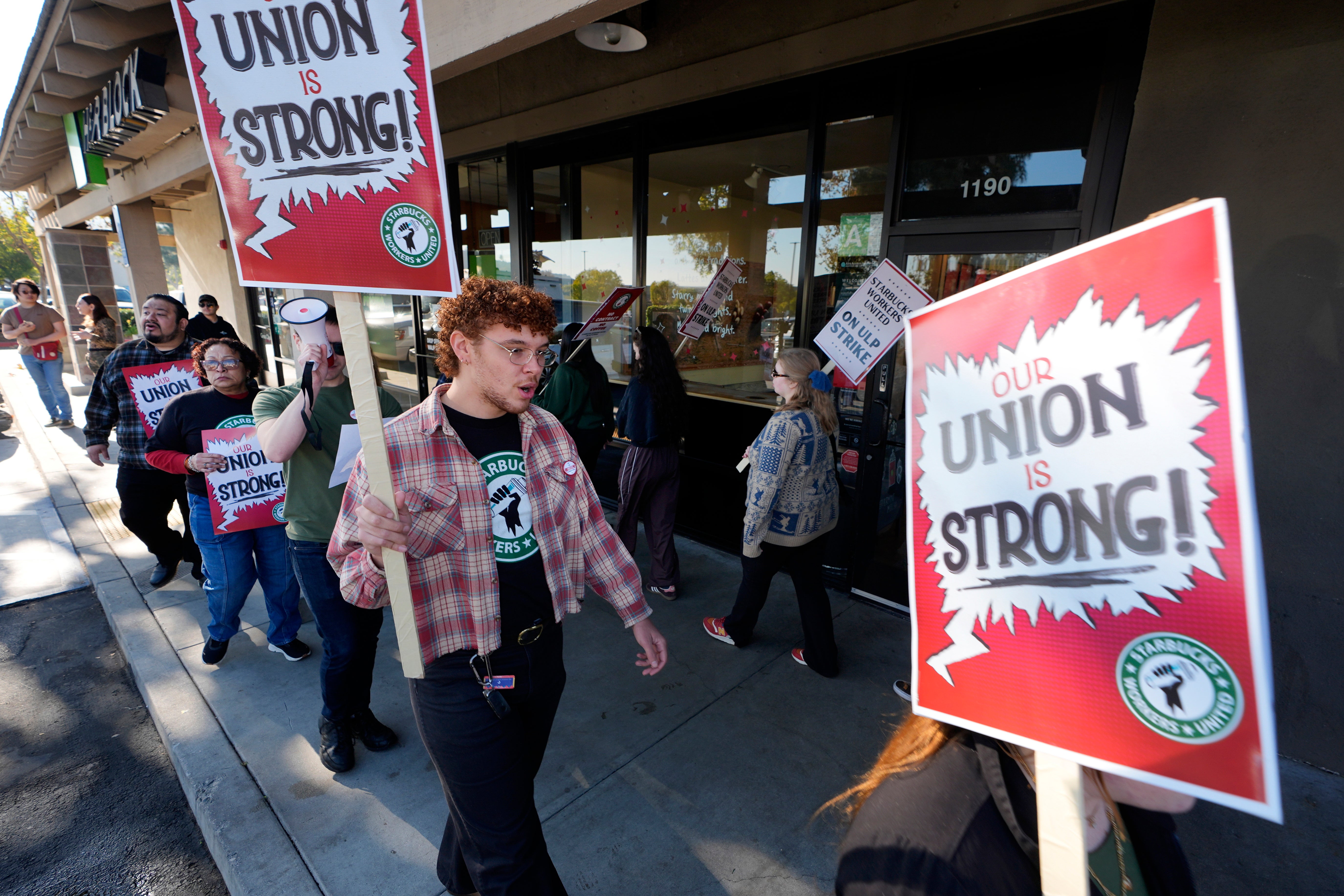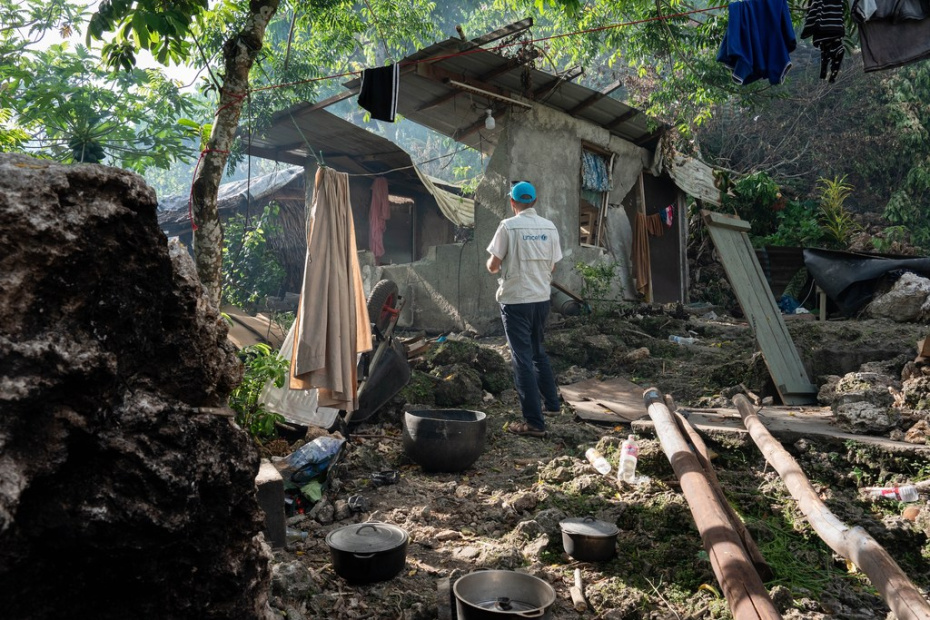The student-led protest movement was boosted by farmers, actors and educators, in the most recent show of public anger over the collapse of a train station roof seven weeks ago.
Serbians took to the streets in the capital Belgrade on Sunday to protest against the current government.
Roughly 29,000 people attended the demonstrations, according to an interior ministry statement.
Serbia's government has been under pressure after seven weeks of sporadic demonstrations nationwide in response to the collapse of a train station roof that killed 15 people in the northern city of Novi Sad.

Demonstrators blame the train roof collapse on widespread corruption and sloppy work on the railway station building, which had been refurbished twice in recent years as part of projects involving Chinese state companies.
Some 13 people have been arrested over the Novi Sad tragedy, including a government minister. But the minister's later release fueled public skepticism about the investigation.
Serbian President Aleksandar Vucic had been dismissive of the protests, saying on Saturday said he "doesn't really care" about the protests, accusing his opponents of manipulating students to gain power.
But he referred to Sunday's protest as a "significantly large gathering," saying that he was "ready" to hear the protesters' demands.

A student-led movement
Sunday's protest, much like in previous weeks, was organized by students but had additional support from groups like farmers' unions, actors and educators on Sunday.
The gathering started with 15-minutes of silence as tribute to the 15 victims at the Novi Sad train station.
After the solemn moment, demonstrators staged a "half-hour noise" by blowing whistles and other loud items.
The rally at Belgrade's Slavija Square is considered one of the largest in recent years to challenge Vucic's power.
In response to the protest movement, Serbia's government has extended school winter holidays, starting them nearly a week earlier.
Authorities have also promised various subsidies for young people in an effort to quell public anger.
jcg/msh (AP, AFP, Reuters)
Tens of thousands rally in Belgrade demanding accountability over Novi Sad railway station disaster

Tens of thousands of people gathered in Belgrade on December 22 in one of the largest anti-government demonstrations in years, demanding accountability for a train station canopy collapse in Novi Sad that killed 15 people.
The protest, led by students and farmers, occupied Slavija, a major roundabout in Serbia’s capital, bringing traffic to a standstill. Participants observed 15 minutes of silence in memory of the victims before blowing whistles and vuvuzelas.
The canopy collapse on November 1 at Novi Sad railway station has become a rallying point for public dissatisfaction with President Aleksandar Vucic and his ruling Serbian Progressive Party (SNS). Opposition leaders and protesters have blamed the disaster on shoddy construction and alleged government corruption.
“Vucic, thief!” some protesters shouted, while others held banners reading, “You have blood on your hands.”As night fell, demonstrators illuminated the square with mobile phone lights in a symbolic gesture of remembrance and solidarity.
The demonstration is the latest in a series of protests that have gripped Serbia for weeks, with students and farmers leading demands for the release of detained activists and an end to legal proceedings against those involved in earlier demonstrations. They have also called for accountability for alleged attacks on protesters during initial rallies following the collapse.
The Serbian government has faced mounting criticism since the tragedy. Protesters have accused authorities of nepotism and inadequate oversight in public infrastructure projects. The renovation of the Novi Sad station, conducted by a Chinese-led consortium, has been scrutinised after Serbian Railways claimed the project excluded the collapsed concrete overhang.
The Higher Public Prosecutor’s Office in Novi Sad announced on November 21 that 11 people, including former Construction Minister Goran Vesic and ex-Railway Infrastructure Director Jelena Tanaskovic, were arrested in connection with the collapse. They face up to 12 years in prison if convicted.
Students have played a prominent role in the protests, blocking traffic outside their faculties daily for 15 minutes in tribute to the victims. On December 20, the government extended winter school holidays in an attempt to quell unrest.
The Novi Sad tragedy has amplified longstanding frustrations with the government. Critics accuse the SNS, in power for over 12 years, of systemic corruption, election rigging and undermining democratic institutions. The protests echo similar mass mobilisations, such as those following the May 2023 school shootings, which also drew tens of thousands to the streets.
Despite the widespread dissatisfaction, the protests are unlikely to lead to significant political change. The opposition remains divided and unable to present a cohesive alternative to the ruling party, whose control over key institutions and media remains unchallenged.
The tragedy in Novi Sad has exposed deep fissures in Serbian society, revealing public dissatisfaction with the government’s handling of key issues. However, without a united and convincing opposition, the protests will struggle to translate into concrete political change.
Tens of thousands of people gathered in Belgrade Sunday to protest against President Aleksandar Vucic and his ruling Serbian Progressive Party (SNS). The rally, organised by students and farmer unions, was part of a wider movement demanding accountability for the collapse of a railway station roof that killed 15 people last month.
Issued on: 22/12/2024 -
FRANCE24
By: NEWS WIRES

Tens of thousands of people streamed into a central square in Serbia's capital on Sunday for a rally against populist President Aleksandar Vucic and his government, whose tight grip on power has been challenged by weeks of street protests led by university students.
The rally at Belgrade's Slavija Square, one of the largest in recent years, was called by students and farmer unions. It was part of a wider movement demanding accountability over the Nov. 1 collapse of a canopy at a railway station in the country's north that killed 15 people.
“We are all under the canopy,” read one of the banners displayed at the main Belgrade square.
Smaller rallies were also held in the cities of Nis and Kragujevac. The protest in Belgrade started with a 15-minute silence for the victims, and later chants of “You have blood on your hands!” were heard.
Many in Serbia blame the collapse on widespread corruption and sloppy work on the railway station building in the city of Novi Sad that was twice renovated in recent years as part of questionable mega projects involving Chinese state companies. Protesters demand that Vucic and those responsible face justice.
Read moreSerbia: Anti-corruption movement gains ground after deadly train station accident
Serbia's popular theater and movie actors joined the protest, with actor Bane Trifunovic describing Sunday’s rally as “a festival of freedom.”
In a show of confidence, the Serbian president on Sunday inaugurated a section of a newly built highway in central Serbia. Vucic said he wouldn't budge to opposition demands for a transitional government and accused his opponents of using students to try to seize power.
“We will beat them again,” said Vucic.“They (the opposition) don't know what to do but to use someone's children.”
In an apparent attempt to defuse the student-led protests, Vucic has been advertising what he said are “favorable” loans for young people to purchase apartments as well as attracting tens of thousands of doctors and other skilled people who have left the Balkan country for a better life in the West in recent years.
Prosecutors have arrested 13 people over the Novi Sad tragedy, including a government minister whose release later fueled public skepticism about the honesty of the investigation.
The weekslong protests reflect wider discontent with Vucic's rule. The populist leader formally says he wants to take Serbia into the European Union but has faced accusations of curbing democratic freedoms rather than advancing them.
Opposition parties have said a transitional government that would prepare a free and fair election could be a way out of the political tensions as ruling populists also have been accused of rigging past votes.
Serbia’s government has extended school winter holidays by starting them nearly a week earlier to grapple with widening student protests.
Classes at universities throughout the Balkan country have been suspended for weeks with students camping inside their faculty buildings. In recent days, more high school students have joined the movement. Occasional violence has erupted when pro-government thugs tried to disrupt the protests.
A group of farmers said Sunday that police took away the tractor which they drove into central Belgrade ahead of the protest. In addition to the farmers, Serbia’s students also have received nationwide support from all walks of life including their professors, media personalities, lawyers and prominent individuals.
Vucic initially accused the students of launching protests for money but later said he has fulfilled their demands, including publishing documentation relating to the renovation work at the Novi Sad station.
(AP)


























